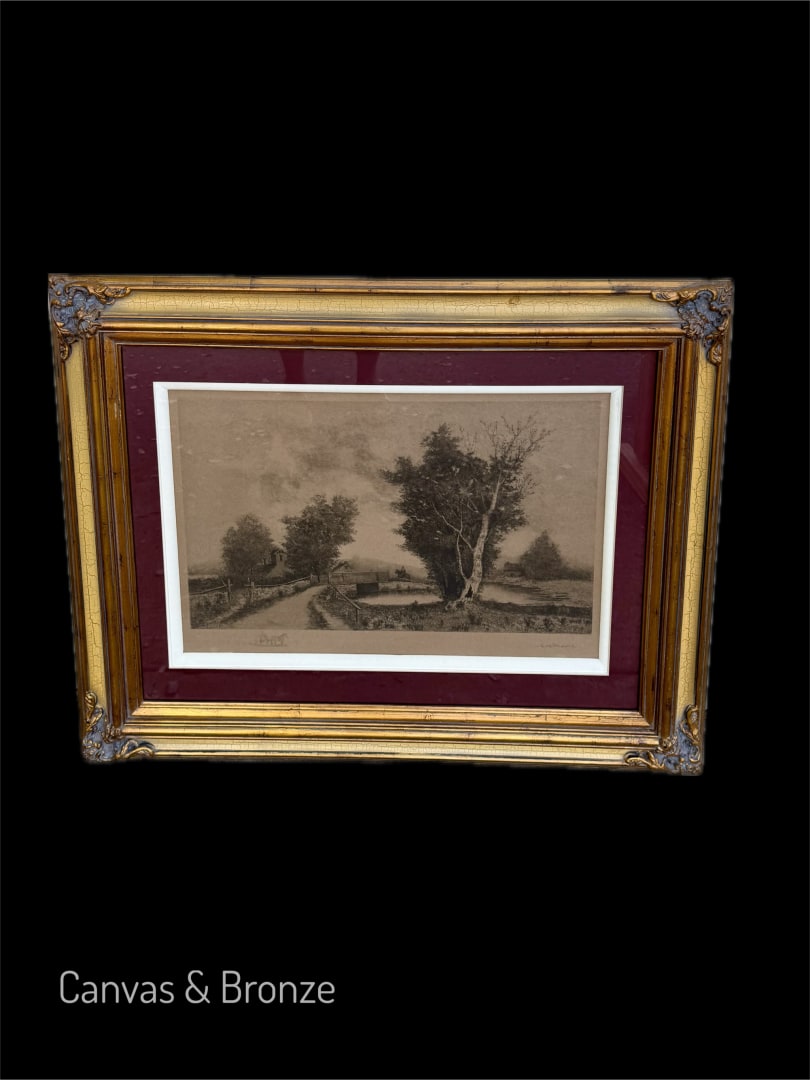George Burton Drake (1876–1942) balanced dual vocations in ministry and art, leaving behind a modest but quietly resonant body of landscape paintings. Initially taking up painting as a hobby, Drake demonstrated a natural aptitude across several media, including oils, watercolor, and pencil sketching. Despite having no known formal art education, his skill and versatility as a self-taught artist earned him recognition among collectors of American regional art. He signed his artworks ""GB Drake,"" often distinguished by stylized vertical strokes in the signature.
A carpenter and tinsmith by trade, Drake’s artistry extended from skilled craftsmanship to visual composition. His works often portray serene, pastoral scenes—solitary figures meandering through lush landscapes, towering trees, and distant cottages rendered in gentle tones. One known example is a 25"x35" oil painting titled "The Upland Pasture," acquired in 1951 from the Strobridge Lithograph Company in Cincinnati, Ohio.
Themes and Artistic Legacy
Drake’s paintings reflect a meditative vision of the American countryside, with nature portrayed as a place of quietude and spiritual reflection. He favored watercolors, a medium in which he appears to have been especially prolific. His subject matter was consistent: tranquil wooded settings, with an emphasis on solitude and understated beauty. While few of his works are held in public collections, they continue to surface at auctions and estate sales—cherished by those who appreciate his understated talent.
A Life of Service and Creativity
Born in Eagle, New York in 1876 (some sources list 1870), Drake was the only surviving child of John and Emily Drake. Raised in a family shaped by hardship—his father wounded in the Civil War—he grew up helping his family while pursuing his education at Pike Academy and later Ridgeville College in Indiana. Drake's life was deeply intertwined with the Congregational Church, serving as a minister in communities across Vermont, Kansas, Missouri, and Illinois. He retired to McPherson, Kansas, where he passed away in 1942.
Drake’s family legacy includes a lineage of academics and ministers, with descendants serving in leadership roles in higher education and religious communities. Yet his art, humble in origin and modest in fame, offers a lasting tribute to the contemplative power of rural life.
